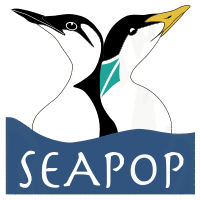Seabirds and kelp harvest – conflict or harmony?
Coastal kelp forest ecosystems create dynamic and productive habitats for invertebrates, fish and seabirds. Worldwide, kelp is harvested commercially, affecting kelp-associated animal communities. Using GPS-tracking data, researchers have recently documented large spatial and temporal overlaps in areas used by foraging European shags Phalacrocorax aristotelis and by kelp harvesters. This highlights the importance of understanding the trophic effects of this harvest in order to ensure sustainable management of coastal resources.
Tracking shag movements with GPS
Every year, approximately 150 000 metric tonnes of kelp are harvested along the Norwegian coast, but how fish and seabirds respond to kelp harvest is virtually unknown. In a study carried out in central Norway, researchers used six years of diving- and GPS-tracking data on breeding European shags to determine the spatial overlap between the commercial kelp harvest and the foraging areas of the birds. Further they aimed to assess immediate, short- and long-term impacts of the harvest on the foraging behaviour of the shags.
Considerable resource conflict
The spatial and temporal overlaps in areas used by foraging shags and kelp harvest were extensive. Indeed, most of the birds foraged in areas that were also highly suitable for kelp harvest, i.e. dense kelp-forested areas. However, due to the large spatial and temporal scales of the harvest data, fine scale changes in shag behaviour in response to kelp harvest could not be detected. Nevertheless, the researchers identified several issues that should be addressed in future studies on how seabirds are affected by kelp harvest. Among them is the need for experimental studies using directed and controlled harvest to investigate the effects of kelp harvest through the different trophic levels.
Read the article:
Contact person: Signe Christensen-Dalsgaard, NINA

Photo: Arne Follestad
